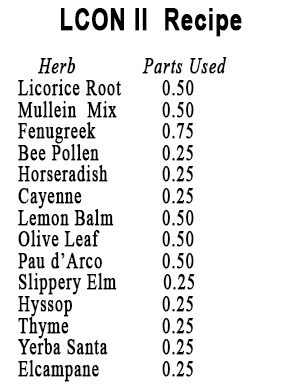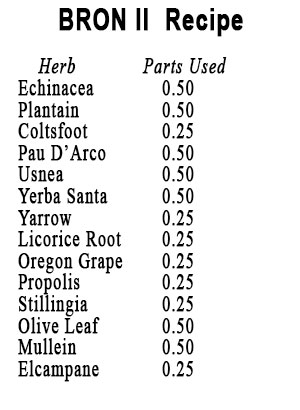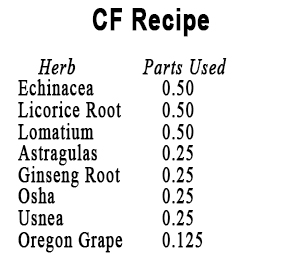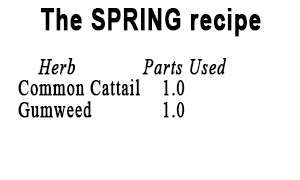God’s Amazing Pharmacy

God’s Amazing Pharmacy
Butterfly Express, like everyone else on the front lines of supply today, has run out of or is running low of a few popular products recognized as beneficial to the lungs or effective against viral infections. Some of these items are not even available out there for restocking. However, this is no cause for panic! God’s Amazing Pharmacy is far more extensive than we can possibly deplete! There are a great many herbs that have astonishing healing properties. There are even herbs with properties along the very same lines as the ones that have suddenly become so popular that they are in short supply or non-existent in the marketplace at this time.
I want to acquaint you, today, with some of my favorite herbs. Perhaps, you may be overlooking or just not aware of some of them. I also want to make you aware of some herbs that would make excellent replacements for these out-of-stock herbs.
Herbal Formulas
If you read this article all the way through and to the very end, you will find that I say frequently such things as “best used in small quantities” or “best used as part of a formula”. Herbs are perfectly safe. They are also powerful. They must be powerful in order to combat all of the things that we require their assistance with, especially in today’s world.
It generally does not take a great deal of an herb to achieve the benefits of that herb. Additionally, to get the results you want in a situation, the healing focus of several herbs may be required. A well-built formulation of several—or even many—herbs will be best. With a formula, we receive the benefits of several herbs at once. In addition, we reduce even the remote possibility of “getting too much of a good thing.”
In almost all applications—there are exceptions—these powerful natural healers are best used in tandem with one another. Just as people are often stronger when standing together, supporting one another, herbs work best this way also.
All of the herbs discussed in this article (as well as the other herbs in these formulas) are described in more detail in Butterfly Miracles with Herbal Remedies. This information can also be found on the Butterfly Expressions website.
Butterfly’s CF Formula
Let us begin by discussing a formula that has, sadly, been overlooked recently. I am kicking myself for not remembering this formula sooner. I originally created the CF formula as a tool in a nasty, but successful, battle with a deep-seated case of Chronic Fatigue/Epstein Barr syndrome. As you will see from the recipe below, this formula targets the lungs. It also contains some very heavy duty anti-infectious agents.
The CF formula even contains those wonderful herbs, Lomatium, and Osha, which are unavailable on the market at this time. Of course, that means that when Butterfly’s supply is gone, it will be gone for a short while. Please—this is not a signal for those of you who hear about this formula first to buy a 10-year supply. But it is a head’s up that this might be something to consider having a bit of in your own supply cupboard.
The CF Formula
Information About Some of the Herbs in CF
Ginseng
Please note the addition of Ginseng in this formula. This world-famous Traditional Chinese Medicine herbal tonic is probably the most widely used and certainly the most widely studied herb of all time.
Extensive research has been done in the West on the benefits of Ginseng. This research has proven conclusively that Ginseng has the amazing ability to increase resistance to the negative effects of stress. Of all the benefits of Ginseng, this ability to help our bodies and minds handle the stresses of everyday living better and without undue damage, is the most impressive and important to me.
Ginseng acts on the pituitary and adrenal glands, toning and stimulating their functions, providing additional energy, and preventing mental and physical fatigue. Ginseng also enhances the function of the nervous system. Some of the best results for Ginseng are seen among the elderly and those in depleted states from stress or illness. It should be mentioned that it is best to avoid caffeine and other stimulants while taking Ginseng.
Oregon Grape
Goldenseal is, of course, a very renowned herb. A Chinese herb but used widely all over the world. Michael T. Murray, N.D. has conducted vigorous laboratory trials on the constituents of herbs. He claims that Oregon Grape has nearly the same constituents as Goldenseal. Goldenseal is sometimes contra-indicated for people with pancreatic problems (diabetics and those suffering from hypo or hyperglycemia). Oregon Grape is missing the molecular compound that is responsible for this contra-indication.
I have found, during the years that I have used herbs, that a plant that grows in one’s own area (as opposed to one grown in, say, China) is usually more effective for people living in that region. Oregon Grape grows in my area. It is less expensive than Goldenseal. Sometimes I wild-craft it. I tend to use it in most of my formulas. I get the same excellent results as when I use Goldenseal in those same formulas.
Oregon Grape and Goldenseal both exhibit a broad spectrum of antibiotic activity because of their berberine content. These plants are effective against bacteria, protozoa, and fungi, including staphylococcus and streptomyces species. The action of these herbs is actually stronger than many of the pharmaceutical anti-biotics but does not create the overgrowth of candida albicans that so often accompanies prescription antibiotic use. In addition, berberine increases the blood supply to the spleen, greatly enhancing immune system function.
Plants containing berberine also have excellent diuretic and diaphoretic (fever reducing) properties. Either one of these herbs, by itself or in a formula, is an excellent response to most types of acute illnesses.
Astragalus
This is an herb I would use as a protective agent against the flu season or any sort of lung infection, illness, or disease. Astragalus contains antioxidants that protect against cell damage. They also protect the body against such things as colds, upper respiratory infections, high blood pressure, liver disease, and diabetes. Astragalus has a affinity for the lungs and upper respiratory tract.
In the United States, researchers are looking at Astragalus as a possible treatment for people whose immune systems have been weakened by chemotherapy and radiation. Astragalus also acts as a mild diuretic.
Astragalus builds the immune system. In fact, it is one of the best-researched immune system stimulants now available. It works like Echinacea, in that both herbs increase the number and activity of immune cells.
The SPRING Formula
This simple blend proved extremely effective against and unusual strain of bacterial flu a few years ago. This flu had a very destructive effect on the lungs.
This herbal combination was created as the result of a prompting that my husband felt. As you can see from the recipe below, SPRING contains only two ingredients. They are both things we had never used for anything before my husband gathered them and asked us to tincture them.
I have since done a little bit of research into the healing properties of Cattail and Gumweed. Impressive medicinal plants, both of them! Nevertheless, I would recommend taking this in conjunction with the other remedies discussed in this article.
Cattail
Cattail has antiseptic, astringent, coagulant, and pain-relieving properties. In other words, it may kill invading organisms, help dry up the lungs, control bleeding if there is any, and relieve some of the pain. In addition, it is also useful to reduce fever and increase urine flow.
Gumweed
Gumweed has been an important medicinal plant since pre-colonial times. I wonder how I missed using it. It grows in every uncultivated nook and corner of our farm! Taken internally, it is said to relieve coughs and respiratory congestion. Gumweed also has expectorant and antispasmodic qualities. One herbal author indicated that Gumweed is used in modern medications for treating asthma and bronchitis.
The LCON Formula
This formula, formerly called lung congestion, has always been my “big guns” in any situation that involves the lungs. Supply and demand in the market place have necessitated the removal of pleurisy root from the LCON formula. Elecampane, scheduled to be removed, remains in the formula, however, because Butterfly has obtained some of this wonderful lung herb. It may or may not be available in the near future. For this reason, I have decided to create a new version of this formula by adding other common herbs. These additions will strengthen this formula and allow it to accomplish the things it was designed to accomplish. This new formula will be called LCON II.
As originally formulated LCON is a very hot tincture. The reformulated version is just as hot! This is due to the Horseradish and Cayenne that it contains. I considered leaving the Horseradish out as I contemplated the reformulation but I simply could not.
The only herb I removed was Pleurisy Root. My additions are Licorice Root, Mullein Mix, Lemon Balm, Olive Leaf, and Pau D’Arco . This formula will be available from Butterfly but only in tincture form. At least for now.

Horseradish
Horseradish has strong antibiotic capabilities with a specific focus on respiratory and urinary tract infections. This herb (condiment) also stimulates perspiration. This makes it useful for fevers and for ridding the body of toxins and the toxic waste products of dying viruses. Horseradish may irritate the digestive tract if overused. Some of you may have already experienced this when using Horseradish as a condiment. For this reason, I always use Horseradish, as an herb, as part of a formula and not by itself.
Cayenne
Cayenne is about as close to a cure-all herb as there is in nature. If I could only have one herb in my house, Cayenne would be the one that I would choose. It is the purest and most powerful of all the medicinal herbs. The best description I have ever read of Cayenne is that it causes “the fires of life to burn more brightly.” Cayenne rebuilds (yes, rebuilds) vein structures, removes plaque from veins, and sends the blood rushing along carrying nutrients to every cell of the body.
In any condition where bleeding in the lungs may become an issue, Cayenne will help control the bleeding while at the same time, rebuild the tiny arteries and capillaries that feed lung tissue.
Taken as an illness begins, Cayenne fights the infection while inducing a beneficial and infectious agent killing sweat. In respiratory illnesses, Cayenne acts as an expectorant, thinning the mucus in the lungs and making it possible for the body to expel it.
The “Heat” of Cayenne
The sensation (the burning feeling) created on the tongue stimulates the brain to release endorphins. Endorphins block pain receptors throughout the body and induce feelings of wellbeing. A positive attitude alone can have a beneficial effect on healing, especially with chronic illnesses.
Cayenne contains carotene molecules which are powerful antioxidants. Interestingly, although Cayenne is hot to the taste it actually lowers body temperatures by stimulating a center in the hypothalamus that is responsible for cooling the body. Cayenne, applied topically, reduces pain.
Cayenne is an accentuator and will increase the healing properties of the other herbs. By adding a touch of Cayenne to a respiratory formula, for example, the respiratory herbs will reach the lungs and begin their healing action much more quickly. You will notice in the recipe section of this manual that Cayenne, in small parts, is in many formulas.
Cayenne is high in zinc, which is essential to the hormonal glands. Cayenne is also high in vitamin A and vitamin C, rutin (which strengthens arteries and veins), iron, calcium, and potassium.
“Ancient” Herbal Wisdom
The following is quoted from Back to Eden by Jethro Kloss, first published in 1919 (before so much herbal wisdom was lost to us):
Dr. Thomas, of London, who practiced a long time in the West Indies, found Cayenne an almost certain remedy for yellow fever, and almost every other form of human malady. There is, perhaps, no other article that produces so powerful an impression on the animal frame that is so destitute of all injurious properties. It seems almost incapable of abuse. Capsicum is a pure stimulant, ultimately reaching every organ in the body.
Yerba Santa
The name of this herb means “holy or sacred herb” in Spanish. Yerba Santa is an excellent remedy for all things to do with the lungs and the stomach. This herb is a valuable expectorant. It also helps to control fever.
The antioxidant properties of Yerba Santa benefit the spleen in particular. They counteract fatigue, tone the nervous system, and cleanse the blood.
Emotionally, Yerba Santa is an excellent remedy for those who are grieving or in despair. According to Eastern traditions, these emotions are destructive to the heart and the lungs. The heart responds with the release of these difficult emotions as the lungs heal and breathing becomes easier.
Hyssop
In the past, Hyssop was regarded as a cure-all. Dioscorides, in the 1st century B.C. recommended a recipe containing Hyssop, figs, honey, and water for treating a wide range of respiratory ailments. Although greatly undervalued today (it is coming into its own as an essential oil), Hyssop has shown a positive effect when treating bronchitis and other respiratory infections, especially where there is excessive mucus.
Although Hyssop is considered a stimulant, it can also act as a sedative and a tonic when needed. Bringing the system into balance is what herbs do! It is a useful remedy for asthma, especially with children. Like many herbs with a high percentage of volatile oils, Hyssop soothes the digestive tract and is useful for such ailments as indigestion, gas, bloating, and colic.
Thyme
Thyme produces powerful antiseptic essential oils which are classified as naturally antibiotic and anti-fungal. As a tea, thyme has the power to chase away and eliminate bacteria and viruses. Whether your infection is based on either one, thyme should be effective.
Thyme is very powerful in the fight against chest congestion. It has been used as a lung remedy since antiquity and is used extensively today to prevent and treat respiratory tract infections and pneumonia.
Slippery Elm
Slippery Elm is extremely mucilaginous. Made into a tea it turns to the consistency of egg whites if allowed to cool even a little bit before using. Slippery Elm, made into a gruel, is so nutritious that it is used as a food in convalescence and for those who are extremely debilitated. This is especially true if the problems are connected with an overly sensitive digestive tract. This herbs helps to balance the astringent effects of very strong herbal remedies.
Slippery Elm soothes mucous membranes throughout the body. By this I mean that this amazing herb will soothe irritation and inflammation in the stomach, intestinal tract, urinary tract, gallbladder, reproductive organs, and the respiratory system. Slippery Elm removes mucus faster and more gently than any other herb that I have ever used.
Olive Leaf
A Dutch researcher observed that the oleuropein found in Olive Leaf inhibited the growth of viruses, bacteria, fungi, and parasites.
I will try to sum up the scientific explanation for this antiviral action. The action of oleuropein appears to be three-fold.
First, it interferes with the production of an amino acid critical to the life cycle of a multitude of virus strains.
Second, it halts the spread of the virus. It does this by preventing what is called virus shredding, virus budding, or virus assembly at the edge of the cell membrane.
Third, if the virus penetrates the cell membrane, this constituent has the ability to directly penetrate infected cells. There it stops the virus from replicating itself inside the cell.
Olive Leaf is so effective against viruses and bacteria that it is a major component of the HP formula made for use against various herpes virus strains.
Mullein
In reviewing my herbal notes to write this segment I found such references as “Mullein has a particular affinity for the respiratory organs,” and “Mullein is of particular use in pulmonary complaints,” and “Mullein is particularly useful to the urinary tract and the eliminative organs,” and “Mullein is particularly useful in calming and quieting inflamed and irritated nerves.” In other words, Mullein is useful in just about any circumstance and with any body system, especially where inflammation is present.
Right now, in our world, the respiratory and pulmonary uses are of particular importance. However, keeping the eliminative organs functioning during viral die-off is also critically important. Calming and quieting nerves is, of course, a very beneficial added blessing.
Mullein has the unique distinction of being both astringent (drying to tissues) when drying is needed, and demulcent (healing and soothing) when this is needed. I personally add Mullein to a great many formulas as a protective agent and to guarantee that accidental overuse will not result in further irritation and possible damage. You never make a mistake with the choice of Mullein.
Mullein with Poke Root, and Comfrey would make a very effective poultice for repairing damaged lung tissue. Please remember that the back of the body gives greater access to lung surfaces that the form of the body. Be sure to apply a poultice there, also.
Lemon Balm
There is good scientific evidence (and empirical evidence, as well) that Lemon Balm reduces the growth of a variety of viruses. Certainly, our experience with this herb in essential oil form confirms that it is very effective against every virus we have ever thrown it at. As an essential oil Lemon Balm is referred to as Melissa. Melissa is one of the strongest antimicrobial oils I have ever known. The question is whether these properties exist only in the oil or in the herb, as well once it has been dried for medicinal use. I believe it does.
Lemon Balm has been used as far back as the Middle Ages to reduce stress and anxiety, promote sleep, improve appetite, and ease the pain and discomfort of indigestion.
Pau D-Arco
Pau D’Arco contains a very wide number of active constituents. Unsurprisingly, practitioners throughout the world use this beneficial herb extensively.
Pau D’Arco is an important natural antibiotic for bacterial, viral, and fungal infections, especially of the nose, mouth, and throat. Pau D’Arco is one of the best herbs for strep and staph infections.
The BRON Formula
BRON is an amazing formula for healing the lungs. This is true whether or not the original problem was an infectious agent or something else entirely. However, this formula, as it has been used for many years in our family and business, contains two of the herbs that have gone missing on the market recently. Those two herbs are Lomatium and Osha. But, as explained above, that does not mean that a similarly effective formulation—using some other very effective herbs—cannot be created and utilized.
By adding Plantain, Coltsfoot, Yarrow, Stillingia, Licorice Root, Olive Leaf and Mullein we now have an amazing formula with all the abilities as before. This is going to be my new favorite lung blend. I am grateful for my 40 plus years of experience with herbal remedies that have helped me pick these replacement herbs. I am also grateful God’s amazing pharmacy is so extensive.

Once again, I would like to give you a little bit of information about the herbs that have been utilized in this formula.
Plantain
Plantain is a great healer. It is used both internally and externally. Both Plantain leaf and root are useful in treating chronic lung conditions. Children respond particularly well to Plantain. This herb is also useful in reducing fevers. Plantains have wide-ranging antimicrobial properties. They are also anti-inflammatory and analgesic. In my opinion, the herbal world under-values Plantain except for its use in healing wounds and skin afflictions.
Plantain, like Mullein, is well-balanced as concerns its astringent and demulcent properties. It will help dry out and area, including the lungs, when that is required. It will also bring soothing fluids to an area if that is what is needed at the moment.
Coltsfoot
Coltsfoot, has been in use for lung ailments and coughs for at least 2,500 years. Dioscorides, a Greek physician of the 1st century A.D. recommended it for dry coughs, and for use by “those who are unable to breathe except standing upright.”
This herb is both a demulcent and an expectorant. Demulcent, of course, means that this herb soothes inflamed and damaged tissues. Expectorant means that the herb promotes the liquefying and expulsion of excess mucus (and other unwanted tissue particles) from the body. Coltsfoot has long been one of the most popular remedies throughout Europe for any type of illness that involves the lungs!
Coltsfoot is best used as a small part of a well-built herbal formula.
Yarrow
Yarrow is one of my favorite herbs. Besides having so many healing properties and affecting so many body systems, Yarrow has some other unique characteristics that sets it apart. For example, Yarrow contains all of the usual vitamins and minerals found in plants that are used medicinally. It also contains vitamin F. Vitamin F is an essential fatty acid. It is necessary for the good health and integrity of all the membranes throughout the body. This includes those in the lungs. It also includes the membranes which surround the brain and lie within the brain itself.
Yarrow, is listed as both an astringent and a stimulant herb. It also fits in a great many other classes. This includes sudorific (fever-reducing), I have always been skeptical of herbs that claim to do just about everything. However, I have used yarrow from something in just about every category into which herbs are classified. Yarrow, is a powerful healer for lung complaints, and this is only one of its many uses. This herb really works and works for so many different things!
One of the best features of Yarrow is that it is plentiful all around me. I can find some in my yard and nearly everywhere I may be if I am out in the woods for any reason.
Usnea
Usnea has been one of my favorite herbs ever since I first became acquainted with it. It mixes well with other herbs such as Pau D’Arco and Yarrow.
Usnea is an immune system tonic. It can be used in acute situations as well as for long term immune enhancement and general prevention of autoimmune disorders.
The immune properties of Usnea do not “pull” well in water. It is best to use them as a tincture. When applying topically, the tincture will need to be heated to remove the alcohol. This will prevent the alcohol from causing the wound to burn or sting unnecessarily.
Yarrow with Usnea
The antimicrobial properties of Usnea, combined with the astringent properties of Yarrow, dries out the mucous membranes of the lungs and bronchial tubes in pneumonia and bronchitis better than anything else I know of. These two are used together so often they are available as a combination from Butterfly.
Stillingia
Stillingia is a powerfully stimulating expectorant. It is used to bring up phlegm from the lungs in difficult circumstances. As a stimulant expectorant, it would be well to include Mullein when using Stillingia.
Stillingia purifies the blood. Its diaphoretic properties eliminate toxins from the body through sweating.
Stillingia is an excellent alternative herb. It gradually converts an unhealthy condition into a healthy one. The lymphatic system responds well to Stillingia. It rids the body of toxins and cleanses and purifies the blood. Stillingia is one of the best herbs to relieve bronchial complaints. Being an astringent, it useful in alleviating painful hemorrhoids.
Use Stillingia in small doses. Stillingia acts as a cathartic. It evacuates the bowel in a too drastic and painful manner if too much is taken too quickly. In other words, Stillingia is best used as a small percentage of an herbal formula and not as a single tea or tincture.
Propolis
Bees make Propolis. They gather resin from pine and other cone-producing evergreen trees. Then the bees blend the resin with wax flakes and pollen. This very sticky substance is used to patch holes, seal cracks, and build new panels in the hive. Propolis acts as an antiseptic barrier that protects the hive from contamination. Interestingly, “propolis” comes from a Greek word meaning “defense of the city.”
Some of the nutrients in Propolis are: vitamins A, B1, B2, B3, C, biotin, bioflavonoids, calcium, magnesium, iron, zinc, silicon, potassium, phosphorus, manganese, cobalt, and copper, as well as some antioxidants. The composition of Propolis can vary depending on the location of the bees and what trees and flowers that the bees have had access to.
The antioxidants found in Propolis are responsible for the blood sugar stabilizing effects that it displays.
Lung and Kidney Herbs
There are many additional herbs that are not in these formulas, that are good for the lungs and the kidneys. I would like to take a few minutes to talk about just a couple.
Marshmallow
Marshmallow soothes mucous membranes. This is true in the lungs. It is also true whether it’s irritation in the stomach, ulcers, problems in the intestinal tract such as occurs with colitis, diverticulitis, or irritable bowel syndrome. Sore throats and kidney/bladder irritations also respond well to Marshmallow.
Marshmallow is of particular benefit to the immune system. The immune system, in particular, responds to Marshmallow. This herb stimulates the production of white blood cells. White blood cells are of vital importance in fighting invaders and in dealing with infections.
Eucalyptus
Eucalyptus is a traditional Aboriginal remedy for infections and fevers. Now it is used throughout the world for these ailments.
The astringent properties of Eucalyptus make it effective against colds, flu, sore throats, lung ailments and bacterial infections of many kinds. Eucalyptus is a strong expectorant for the respiratory system.
Lobelia with Cayenne (Cayenne/Lobelia)
Lobelia is a wonderful herb. Butterfly Miracles with Herbal Remedies devotes an entire chapter to it. The great 19th century herbalist, Dr. Samuel Thompson, used this herb extensively. He was a contemporary of Joseph Smith. Joseph Smith believed Dr. Thompson to be an inspired man.
I want to emphasize today Lobelia’s action as a carrier for other herbs and their medicinal properties. Lobelia added to any combination will deliver the herb quickly and efficiently to the area of distress. Moreover, it seems to be selective in its course of action.
Dr. Christopher often described, in his talks and lectures, the cases of two young men who were similar in age but completely different in strength and constitution. Each young man had a boil forming on his neck. The same formula, with a bit of Lobelia added, was administered to both. The strong, robust young man with a good digestion and elimination system was healed by the boil disappearing into the body and the poisons being carried off by his system. The other young man, very weak and delicate, was healed by the boil continuing to encapsulate and grow on his neck until it could be safely removed; his system did not have the strength to process the toxins internally. Because of the intelligence of the Lobelia the best action for the circumstances was chosen by the body.
Dr. Christopher often referred to Lobelia as the “thinking” herb. I have personally witnessed this aspect of the action of Lobelia.
Lobelia, mixed with cayenne, is an incredibly healing combination. Relaxing and stimulating, in good ways, at the same time. It’s helpful in clearing the lungs and excellent for stopping bleeding of any kind anywhere in the body.
Conclusion
I realize that this article, like most of the ones I write, is rather long. I can never decide on what pieces of information to leave out once I get started. Please, if you remember nothing else from all of this, remember that God is good, there are many ways in the herbal world to deal with any situation, and that there is “enough and to spare” in God’s Amazing Pharmacy.




